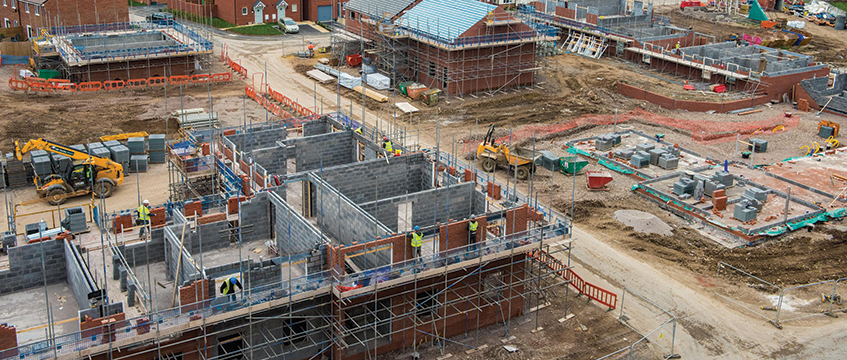Residential development land values dwindle
UK greenfield and urban residential land values were down year-on-year in Q2, according to new data from Savills.
Greenfield land values decreased by 4.4% compared with Q2 2022, while urban values were down by 3.6%. On a quarterly basis, greenfield inched down by 1.1% on Q1, while urban dipped by 1.3%.
Researchers noted that despite mounting market pressures, the ongoing lack of land supply is resulting in “reasonable competition” and maintaining values in some markets.
UK greenfield and urban residential land values were down year-on-year in Q2, according to new data from Savills.
Greenfield land values decreased by 4.4% compared with Q2 2022, while urban values were down by 3.6%. On a quarterly basis, greenfield inched down by 1.1% on Q1, while urban dipped by 1.3%.
Researchers noted that despite mounting market pressures, the ongoing lack of land supply is resulting in “reasonable competition” and maintaining values in some markets.
The report found 11% fewer homes were granted planning consent in England in the year to March 2023, compared with the previous year.
Savills noted that high inflation, rising mortgage rates, falling house prices, ongoing build cost inflation and more modest new-build sales rates have not been “significantly reflected” yet in prices paid for land.
The report found that the number of bids has improved in both size and quality, signalling a return to a “steadier land market equivalent to pre-Covid-19 market conditions”. However, it showed buyers have become much more cost-conscious, with a greater preference for deferred payments and conditionality on bids.
Researchers also observed that bulk sales to housing associations and single-family housing investors were becoming “increasingly common”. Single-family housing deals made up more than a third of total build-to-rent investment in the first half of the year, up from 7% in 2022.
The report showed values are holding up for sites comprising between 50-150 homes in primary locations with no significant upfront infrastructure costs. Sites in secondary and tertiary locations were more likely to see reductions in land values.
Lydia McLaren, research analyst at Savills, said: “Assessing the change in development land values on a quarterly basis at the moment is difficult due to limited transactional evidence. However, based on the evidence and valuations we do have, we find that land values have continued to soften at a national level over the last quarter.”
Patrick Eve, head of regional development at Savills, said: “In the short term, if the supply of land remains constrained then the land market is likely to continue operating in its current form, broadly maintaining values for straightforward deliverable sites, as they are relatively few and far between. But in weaker markets with greater land supply, there are likely to be more significant falls in land values; and there may also be pressure on values for more challenging sites where landowners are forced to sell.
“[While] the mix of economic uncertainty, housing market pressures and the additional costs required to deliver sites will continue to put pressure on land values, the levels of competition are likely to be steady as the major housebuilders cautiously return to the land market to selectively replenish their landbanks alongside sustained demand from alternative parties.”
To send feedback, e-mail pui-guan.man@eg.co.uk or tweet @PuiGuanM or @EGPropertyNews











